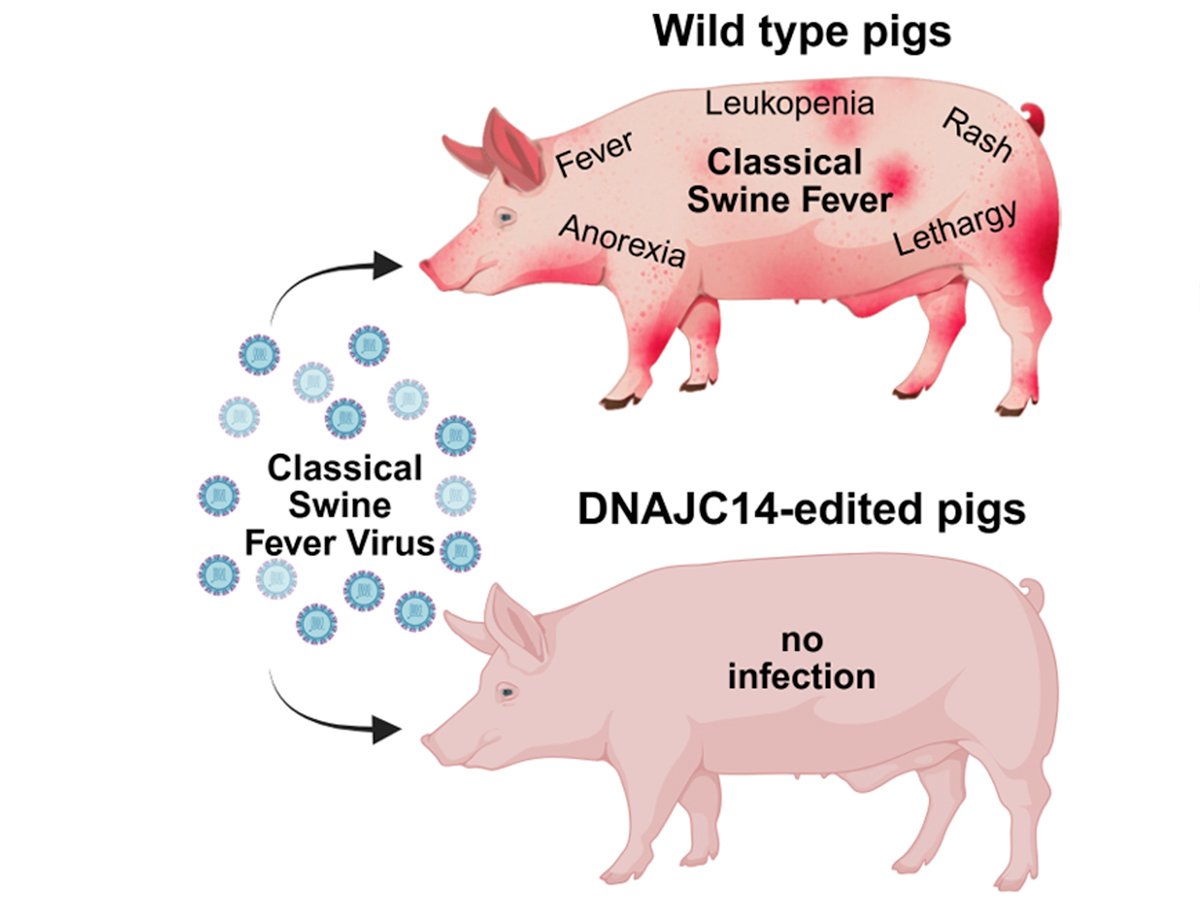A chill is in the air and winter could arrive any time. For horse owners, that means it’s time to check the list of winter horse care methods.
During the Manitoba Livestock Expo Nov. 1 in Brandon, Nadia Cymbaluk spoke about one of the most important aspects of that care – feed and nutrition.
Cymbaluk is a veterinarian and horse nutrition specialist at Carberry, Man. Her presentation is designed for horses used in pleasure riding, not those training or working during the winter. The following advice applies to mature horses, not foals.
Read Also

Gene edited pig resistant to classical swine fever
British scientists have discovered a gene edit that could provide resistance to classical swine fever in pigs and Bovine Viral Diarrhea in cattle
Good quality hay is important, but note the kind of hay fed, said Cymbaluk.
If it’s of good quality, horses do well on a forage mix of 30 percent alfalfa and 70 percent timothy or brome.
Legumes such as alfalfa tend to be much higher in protein and calcium than grass hays like timothy and brome.
By learning to read data from a feed analysis of the hay they’re buying, horse owners can better understand what forages will best meet horses’ nutritional needs.
Once temperatures fall below Ð15 C, expect the feed needs of a horse that is not being kept indoors to start rising.
Generally, horses eat 1.5 times more feed in Ð40 C weather than they do when it’s Ð15.
Feeding hay free-choice during the winter is a good option, Cymbaluk said, since it lets horses decide on amount. If the hay is being fed outdoors, place it in a sheltered area so cold winds do not discourage eating.
Putting hay in a bale feeder can reduce waste, and horses are less likely to pick up harmful parasites because they aren’t foraging off the ground. Hay feeders can reduce waste by 20 percent or more.
There is a pecking order among horses, so dominant animals may prevent others from getting adequate feed. Careful monitoring will reveal whether more feeders are needed. Cymbaluk recommends spacing the feeders at least 15 metres apart.
Although she has had success overwintering horses on feed pellets, Cymbaluk favours long hay.
The preference is less about nutrition than keeping the horse occupied.
A horse can eat enough pellets to satisfy its daily feed needs within one to two hours. With long hay, a horse typically feeds for seven to 12 hours.
“You need long hay to keep the horse’s digestive tract functioning,” said Cymbaluk. “It also keeps the horse busy.”
Horses fed adequate, good-quality hay do not need a grain supplement, she said. The hay should be continuously available throughout the winter months.
The amount of vitamins and minerals available to the horse through the hay will vary with forage quality. The diet of an overwintering horse on the Prairies can be deficient in vitamins A and D.
An all-purpose horse mineral and vitamin supplement may be needed, said Cymbaluk. Check that the supplement also has micronutrients such as copper, zinc and iodine. Winter diets of prairie horses often lack those micronutrients. Selenium may also be deficient in some areas of Western Canada.
Ideally, a horse should have access to heated water of two to 10 C during the winter months, said Cymbaluk. Horse owners need to check at least once a day to ensure adequate water. She suggests checking in early morning, since night-time temperatures tend to be the coldest, posing the greatest risk of the water freezing if it is not inside a heated barn.
Generally, Cymbaluk prefers to deworm her horses three times a year. This kills parasites that can hamper a horse’s digestion.
Where horses are more confined and in closer contact with one another, it may be wise to deworm more often.
Cymbaluk deworms her horses in fall, early spring and mid-summer.














